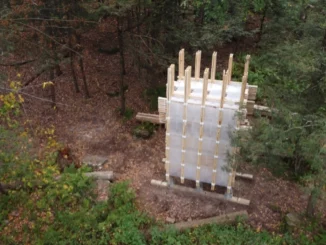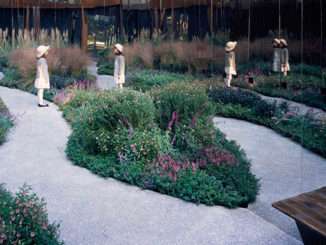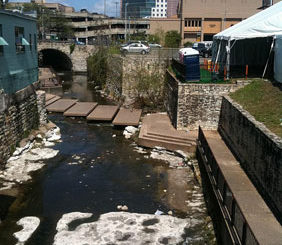Winner of Merit Award in Student – Design category of the 2020 WLA Awards.
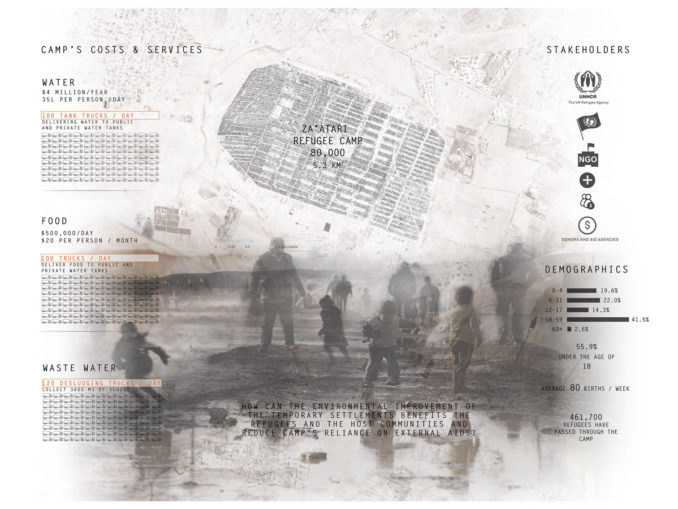
Defiant Gardens is a design response to the humanitarian crisis in the Zaatari Refugee camp located in Jordan, where over 80,000 Syrians are living. The project proposes a transformation of the camp, situated in a water scarce country, into a livable and resilient temporary settlement through landscape architecture design strategies.
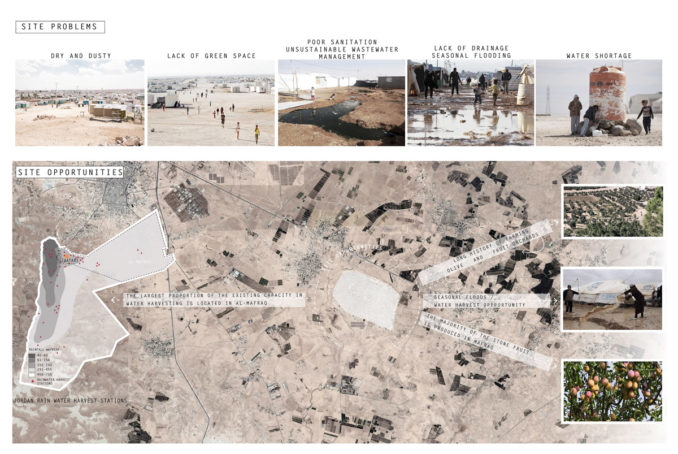
By using grey water treatment, rainwater harvesting, and small-scale food production, this project seeks to reduce the camp’s environmental impacts, as well as its reliance on external aids.
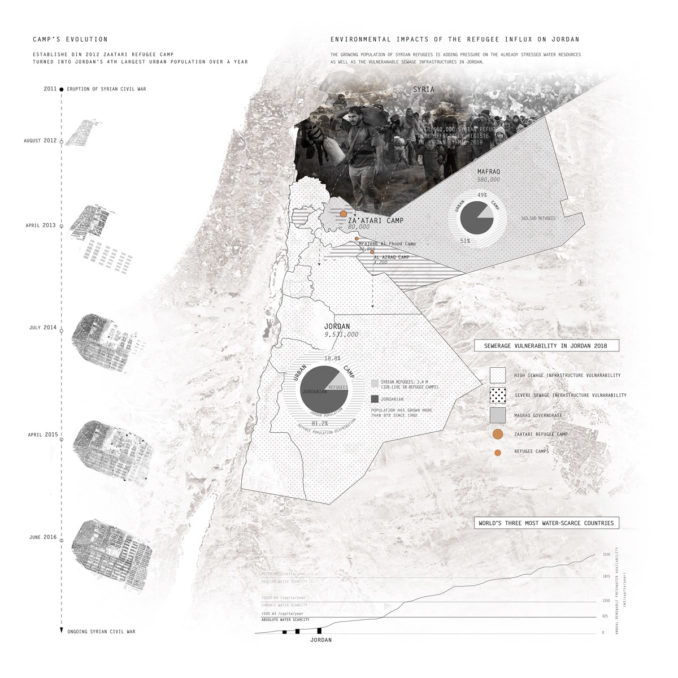
The UN Refugee Agency states that 68.5 million individuals have been forcibly displaced worldwide as a result of persecution, conflict, violence or human rights violations. The spontaneous movement and displacement of large numbers of people may lead to issues such as environmental degradation as well as conflicts between refugees and citizen population and may consequently influence the future decision of governments to offer asylum to refugees.
2012 following the ongoing Civil War in Syria over 650,000 of Syrians have fled across the border to Jordan, staying with host communities, or in organized refugee camps. Set up in July 2012 Zaatari grew out of desertic conditions to become the second largest refugee camp in the world and the fourth largest urban population in Jordan.
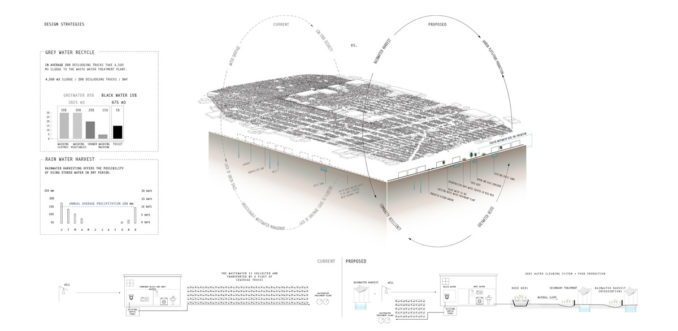
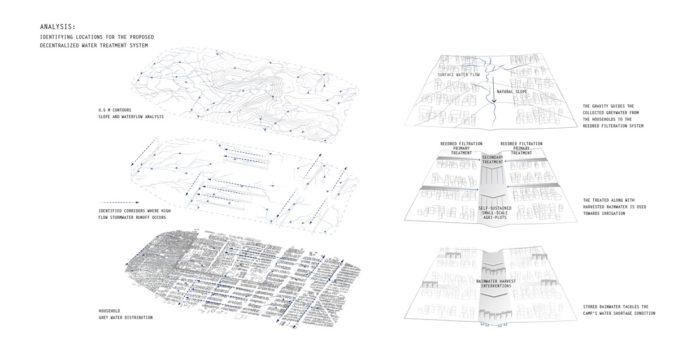
Refugee camps are considered temporary settlements therefore they are fully dependent on external aids and NGOs. It costs an estimated $500,000 a day to run the camp of Zaatari. Considering that the average stay in the camps is 25 years, once the emergency phase is passed, there are long-term solutions required to run these settlements in a more economically and environmentally sustainable way.
The challenge of the design is that the host country is water scarce. Moreover, Jordan’s vulnerable sewage and sanitation infrastructure are great threads to its economy as well as public health.
In addition, since the camp was set up in a very short period, the existing landscape and topographical features and the natural stormwater runoff routes was not considered in the arrangement of its layout. Therefore, lack of proper drainage system leads to water nuisance at many locations in the camp during rainy period.
Based on these analyses, the design proposes a system that uses the treated grey water and the collected rainwater to empower the population towards a sustainable access to resources (food and water) beyond regional limitations, while offering an efficient drainage framework to tackle the flooding issue of the camp.
According to a wastewater assessment conducted by REACH (a leading humanitarian initiative providing granular data, timely information and in-depth analysis from contexts of crisis, disaster and displacement) the amount of domestic greywater produced daily, accounts for 85% (3.8 million litre) of the total wastewater in the camp. Greywater is gently used water from sinks, showers, baths, and washing machines- it is not wastewater from toilets- which use less energy and fewer chemicals than other forms of wastewater treatment. The design proposes an intervention to treat greywater through a decentralized wastewater treatment system, located close to the households.
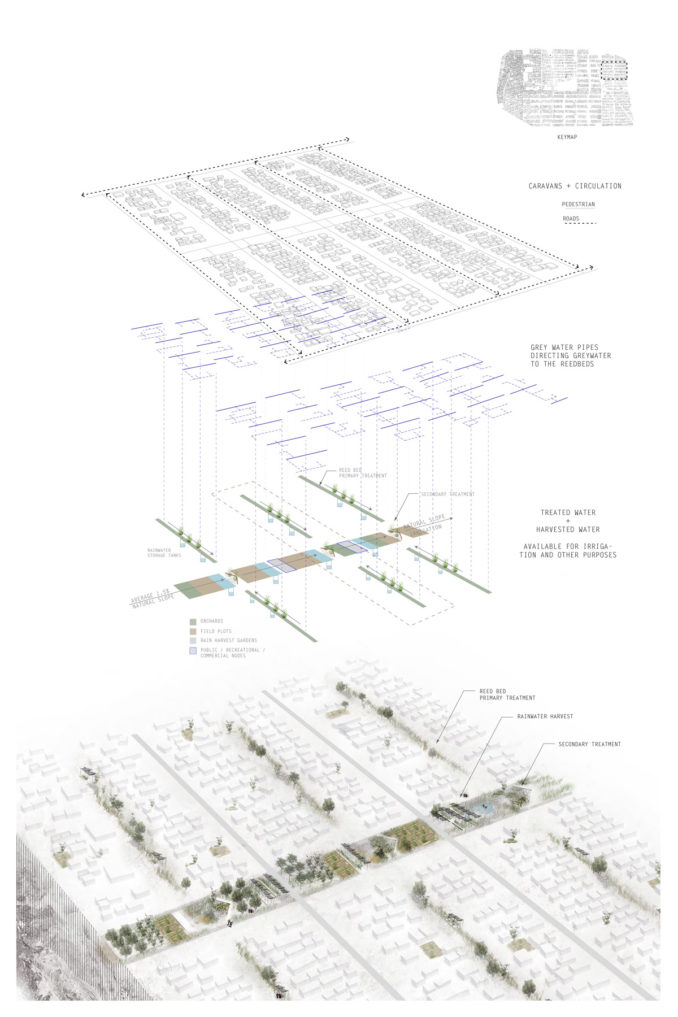
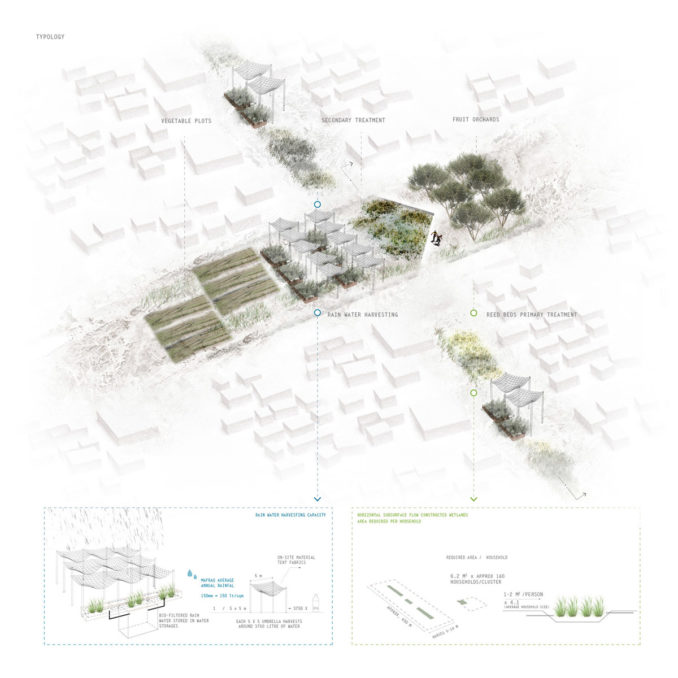
Based on the slope and stormwater runoff analysis and considering the existing layout of the camp these interventions are strategically located along the identified corridors where high flow stormwater runoff occurs. As the corridors work with the site’s natural slope, the gravity guides the collected greywater from the households to the secondary treatment locations, and ultimately runs into the plots for irrigation. This innovative solution enhances stormwater capacity and contributes to a healthier water drainage system, therefore tackles the flooding issue of the low-lying areas.
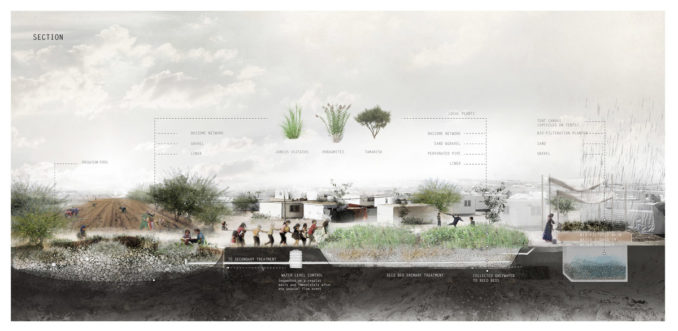
The other component of the proposed design is the rainwater harvest interventions. Rainwater harvesting offers the possibility of using stored water during the dry period. The average annual rainfall in Mafraq is 150mm which equals 150 litre per square meter. Each 5 x 5-meter umbrella can harvest to about 4000 litres of water. This intervention can lead to a significant reduction of water dependency if used efficiently across the camp.
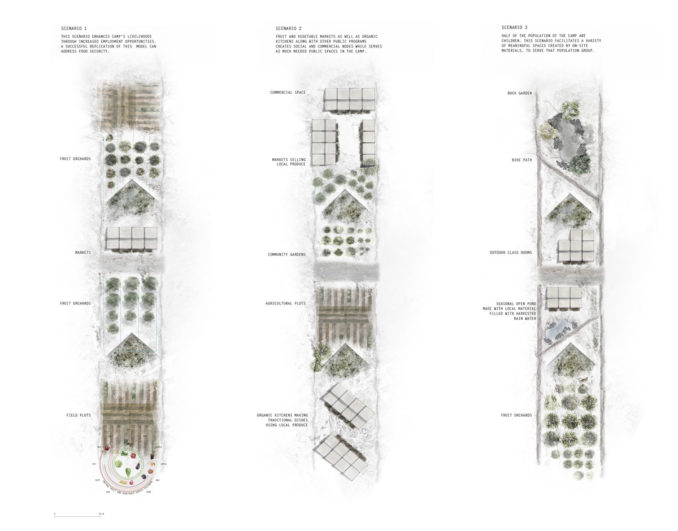
The proposed system creates self-sustaining agricultural landscape that tackle water and food shortage, while it enables greenspace for playground and community gardens.
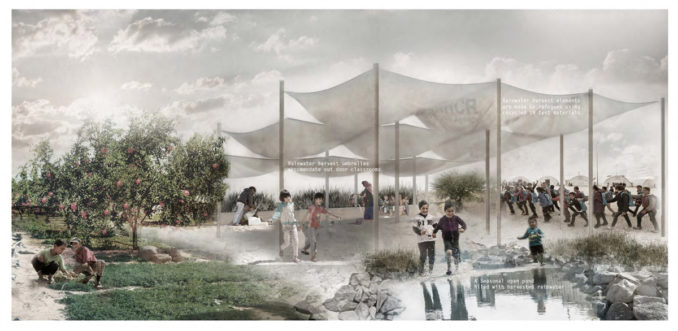
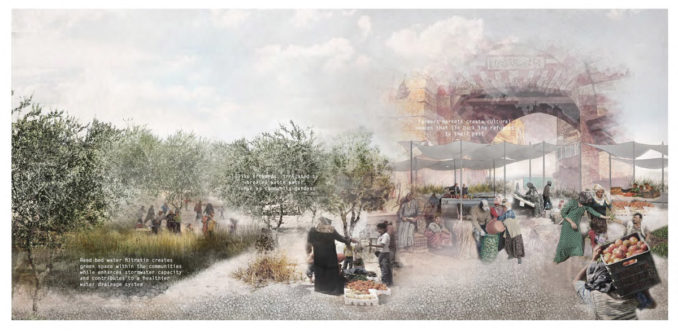
Refugees in Zaatari are still dependent on humanitarian aids. Although the UNHCR aims to support self-efficiency, there is still more attention paid to aiding rather than creating self-reliance. This inefficient humanitarian model needs to be replaced a framework that provides the population with an option to contribute to the economic of their settlements and help the camps to step beyond the emergency relief approach that benefit refugees, the host communities, and the environment even long after the crises ends.
Defiant Gardens
Student: Sarvin Khosravi – University of Toronto
Image and Text Credits: Sarvin Khosravi

